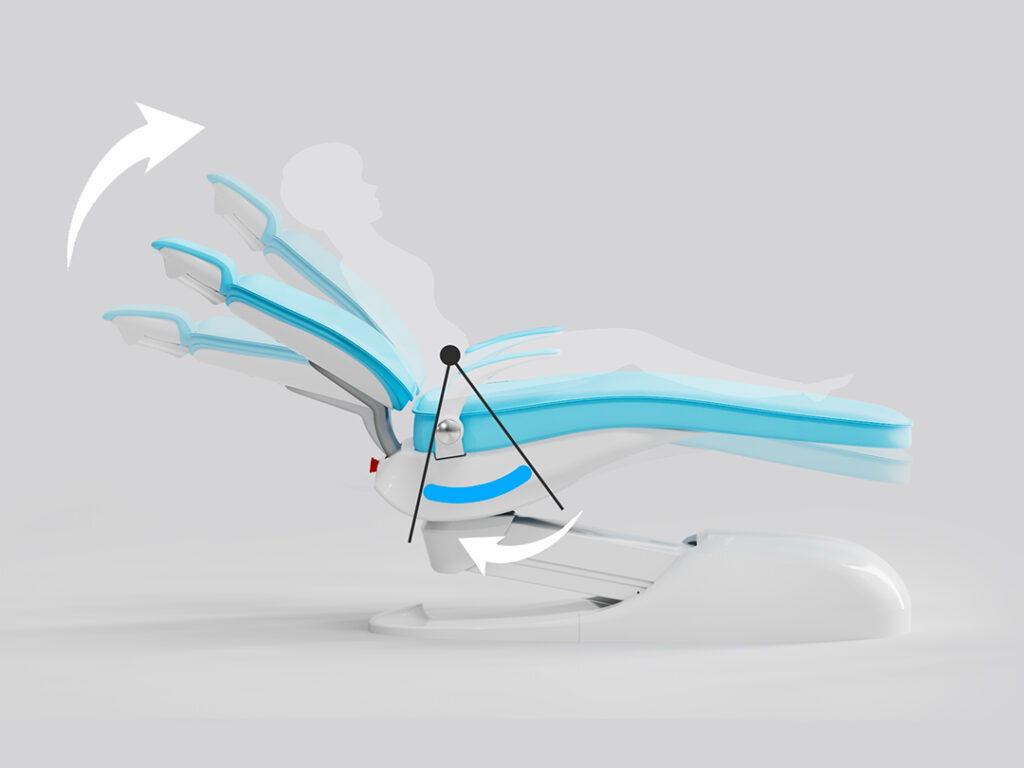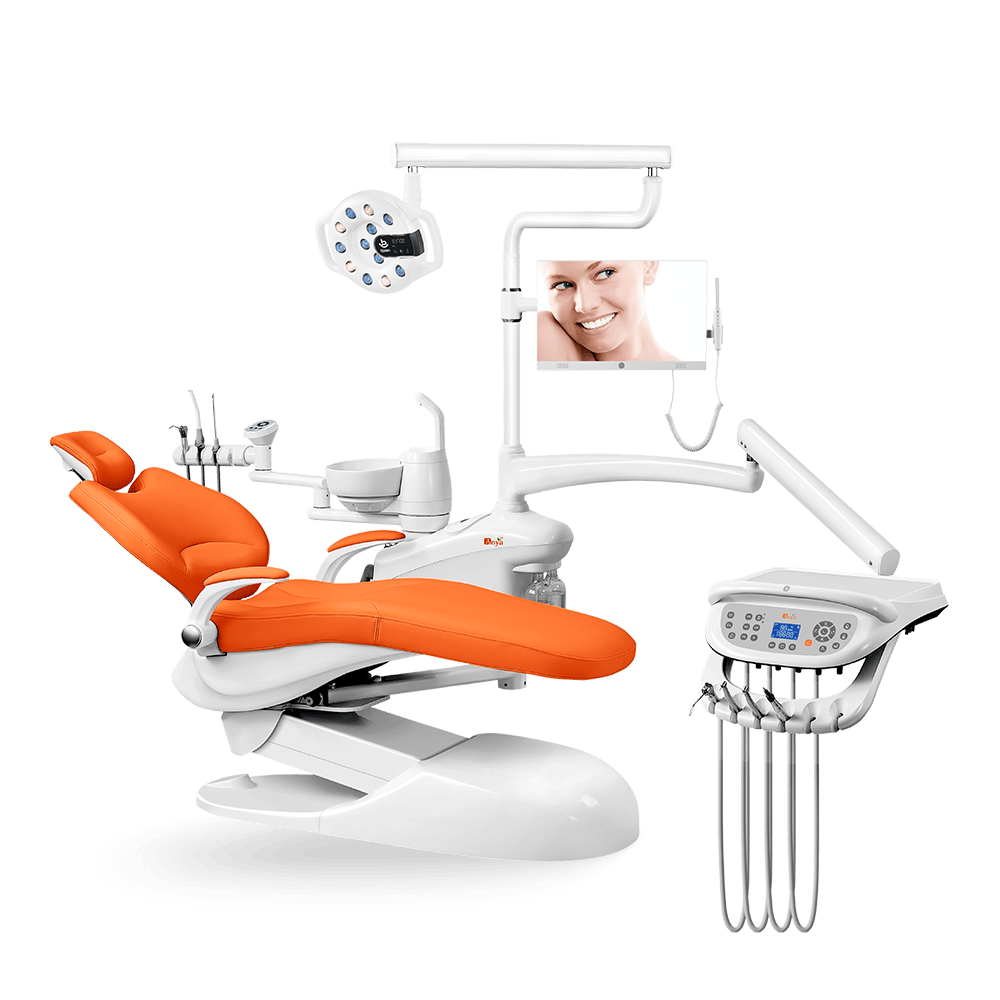The fusion of advanced imaging and precision positioning has revolutionized modern implantology, creating a new standard where millimeter accuracy determines long-term success. At the heart of this evolution is the dental chair—no longer merely a patient support, but a dynamic surgical platform actively contributing to procedural precision. Anya Medical’s implant-specific chairs represent a fundamental shift in how clinicians approach complex placements, with models like the A4800 Implant Series seamlessly integrating with diagnostic technologies to enhance surgical outcomes.
Unlike conventional units, these specialized chairs respond intelligently to patient-specific anatomical data, automatically adjusting positioning to optimize access to challenging sites while maintaining perfect visibility. The StableSight™ technology featured in the A8000 Advanced model compensates for subtle patient movements, maintaining the surgical field within precise parameters—a critical advantage during delicate osteotomy procedures where even minor deviations can compromise results.
What distinguishes Anya’s approach is the thoughtful integration of ergonomic design with clinical functionality. The butterfly-shaped backrest and lumbar support systems found across models from the A3600 to the A8000 don’t merely enhance patient comfort—they create stable platforms that minimize micro-movements during critical drilling sequences. This stability, combined with the chairs’ responsive hydraulic systems operating at library-quiet 53dB levels, transforms the surgical environment into one where clinicians can focus entirely on execution rather than equipment management.
This article explores how these purpose-built systems address the core challenges that have historically limited implant predictability: surgical field stability, anatomical accessibility, and procedural workflow efficiency. Through practical examples and clinical insights, we’ll demonstrate how thoughtfully engineered chair systems can elevate not just surgical precision, but practice profitability and patient satisfaction.
Biomechanical Synergy Between CBCT Data and Chair Positioning
Modern implant success hinges on seamless translation from digital planning to clinical execution. Anya Medical’s A4800 Implant Series represents a breakthrough in this critical connection. Unlike conventional chairs, the A4800 actively interprets CBCT imaging data to intelligently position patients for optimal surgical access. When the system identifies challenging anatomical situations—such as posterior maxillary sites with limited bone density—it automatically adjusts the chair position to create ideal visualization angles. This smart positioning not only improves the surgeon’s sightline but significantly reduces the physical strain of maintaining awkward postures during precise drilling sequences.

The A6000 Flexible model takes this integration further by continuously adapting to the dynamic nature of implant procedures. During clinical evaluations at the Beijing Institute of Dental Research, surgeons reported remarkable improvements in maintaining planned trajectories when the chair synchronized with guided surgery systems. The responsive hydraulic system makes subtle, continuous adjustments that counteract the natural tissue movement occurring during longer procedures. This stabilization capability proves especially valuable in full-arch rehabilitations, where even minor positioning discrepancies can compromise the final restoration’s fit and function. By transforming the dental chair from passive support to active surgical assistant, Anya Medical has fundamentally enhanced what clinicians can achieve in complex implant cases.
Surgical Field Stabilization via CT-Referenced Motion Control
Patient movement has always been implantology’s silent challenge. Even slight breathing or involuntary shifts can compromise precise implant placement in mandibular cases. Anya Medical addresses this fundamental issue with their innovative StableSight™ technology in the A8000 Advanced model. This sophisticated system continuously monitors patient movement and makes instantaneous compensatory adjustments to maintain perfect surgical field stability. For implantologists, this means significantly improved accuracy during critical drilling sequences without constantly stopping to reposition the patient or readjust equipment.

The radiation safety enhancements in Anya’s chair designs demonstrate their commitment to comprehensive patient care. The A3000Cart features specialized headrests that dramatically reduce radiation exposure during imaging procedures while maintaining diagnostic quality. This protection is complemented by an intelligent memory system that recalls optimal positioning for returning patients, virtually eliminating the need for repeat scans. For busy practices handling multiple implant cases daily, these features translate to tangible benefits: shorter procedure times, enhanced patient safety, and consistently predictable outcomes across all types of implant placements.
Predictive Analytics in Bone-Driven Chair Adjustments
Today’s implant dentistry has evolved beyond just placing titanium fixtures—it’s about creating the perfect surgical environment for each unique patient. Anya Medical’s innovative A3600 Chair demonstrates this philosophy through its SmartLoad™ technology, which analyzes your patient’s preoperative CBCT scans to recommend ideal positioning. Rather than using the same generic setup for every case, the chair intelligently adapts to different bone qualities. For dense posterior mandibles, it maintains a more upright position to enhance access and visibility, while for delicate maxillary sites, it gently adjusts to help retain grafting materials precisely where they’re needed.

The A8000 model takes this integration further by responding to real-time clinical feedback during prosthetic try-ins. This responsive system helps maintain optimal occlusal relationships throughout lengthy full-arch reconstructions—a critical advantage when working with immediate loading protocols. Dentists using this technology report significantly fewer adjustment appointments, saving valuable chair time while improving patient satisfaction. By transforming your dental chair from passive equipment into an active participant in the surgical process, Anya’s implant-focused designs create a seamless workflow where technology quietly supports your clinical expertise without overwhelming it with unnecessary complexity.
Quantitative Precision Metrics of CT-Integrated Chair Systems
The clinical superiority of Anya Medical’s integrated systems is quantifiable across multiple dimensions. Data from 2025 multicenter trials highlights how CT-driven chair adjustments translate into measurable surgical improvements:
CT-Chair Integration FeatureAccuracy ImprovementClinical ImpactReal-time DICOM tilt adjustment±0.3° angular control61% reduction in guide sleeve recalibrationRespiratory motion compensation0.15mm trajectory stability83% primary stability in <500 HU bone sitesAutomated FOV positioning94% first-scan success rate22% reduction in patient radiation exposureDensity-adaptive recline algorithms37% torque consistency15% faster osseointegration timelines
These metrics underscore the operational value of systems like the A3600 model, which synchronizes chair kinematics with CBCT-derived bone quality indices. For example, in posterior mandibular cases with dense cortical bone, the chair’s 15° upright positioning reduces drill deflection by 29% compared to supine configurations. Such precision directly correlates with the 91% 36-month implant survival rate reported by early adopters in 2025 case studies.
Implementation Roadmap for CT-Integrated Workflows
Integrating advanced imaging with dental chair technology doesn’t happen overnight. Anya Medical has developed a streamlined three-phase approach that transforms how clinicians use CT data throughout the implant procedure, making complex technology accessible for everyday practice.
Pre-Surgical Planning Made Simple
The innovative CAD-to-Chair interface bridges the gap between digital planning and clinical reality. Instead of manually interpreting complex scan data, the system automatically translates your intraoral scans into optimal chair positioning parameters. This intelligent preparation means surgeons at Shanghai Dental Hospital now spend significantly less time on technical setup and more time focusing on critical treatment planning. The A3600 model excels in this preparation phase with its integrated X-ray viewer and memory position features that recall your preferred settings for similar procedures.
Real-Time Guidance During Surgery
The A4800 Floorstand model transforms implant placement from a mentally taxing procedure to a guided experience. Visual reference guides integrated directly into your field of view help maintain perfect alignment with your pre-surgical plan without constantly shifting attention between screens and patient. The chair’s responsive hydraulic system makes subtle adjustments during longer procedures to compensate for natural tissue movement that occurs over time – particularly valuable in edentulous cases where ridge stability is compromised. Surgeons consistently report feeling less mental fatigue when working with this intelligent support system.
Confidence Through Verification
The true value of technology shows after treatment completion. Anya’s verification system compares actual implant placement with your original plan, providing clear, comprehensive documentation of surgical outcomes. This intelligent feedback loop helps clinicians continuously refine their technique while creating detailed records for patient files and regulatory compliance. Practices implementing this verification process see measurable improvement in placement accuracy over time, enhancing both clinical outcomes and practice reputation. The A8000 model’s comprehensive control system makes accessing and organizing this verification data intuitive through its full LCD display interface.
Conclusion
Modern implantology has evolved beyond skilled hands and sharp instruments—today, the dental chair itself actively contributes to surgical success. Anya Medical has transformed the traditional passive patient platform into an intelligent surgical partner that responds to each unique clinical situation. The A8000 Advanced compensates for subtle patient movements that would otherwise compromise precision, while the A3600 intuitively adjusts positioning based on bone quality, creating ideal conditions for implant placement without constant manual readjustments.
What sets Anya Medical apart in the global dental equipment landscape is their commitment to practical innovation rather than technology for its own sake. By seamlessly connecting diagnostic data with chair functionality, their systems eliminate the frustrating gap between what clinicians see in their treatment plans and what they can actually achieve chairside. For implantologists, this means more predictable outcomes, fewer complications, and enhanced confidence when tackling complex reconstructions.
As the dental world continues to embrace digital workflows, Anya Medical remains focused on creating solutions that respect the clinician’s expertise while quietly eliminating the variables that compromise success. Through thoughtful design and continuous refinement based on real clinical feedback, they continue to advance the standard for what dental teams can achieve—making exceptional implant results more accessible to practices worldwide.




